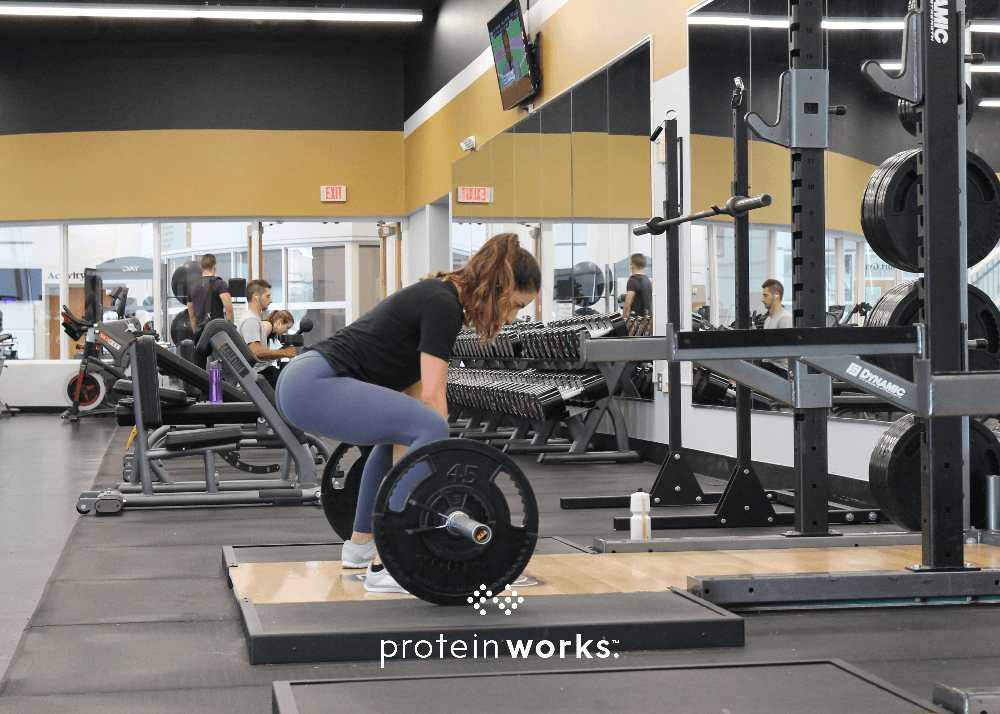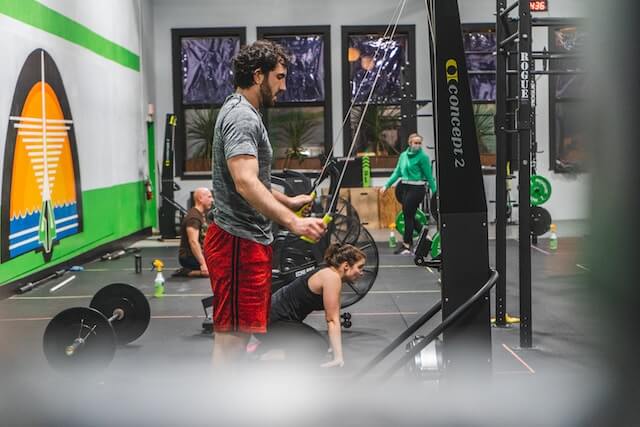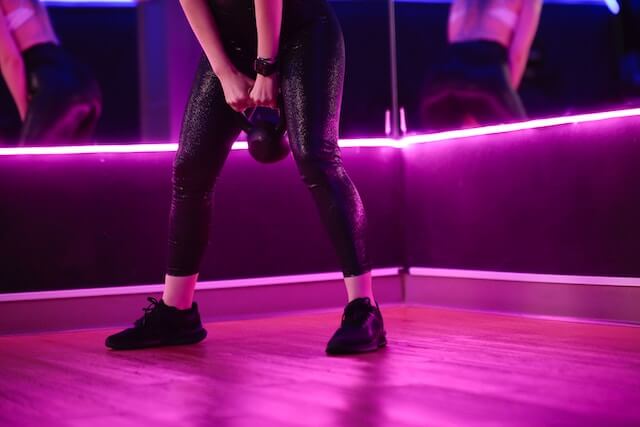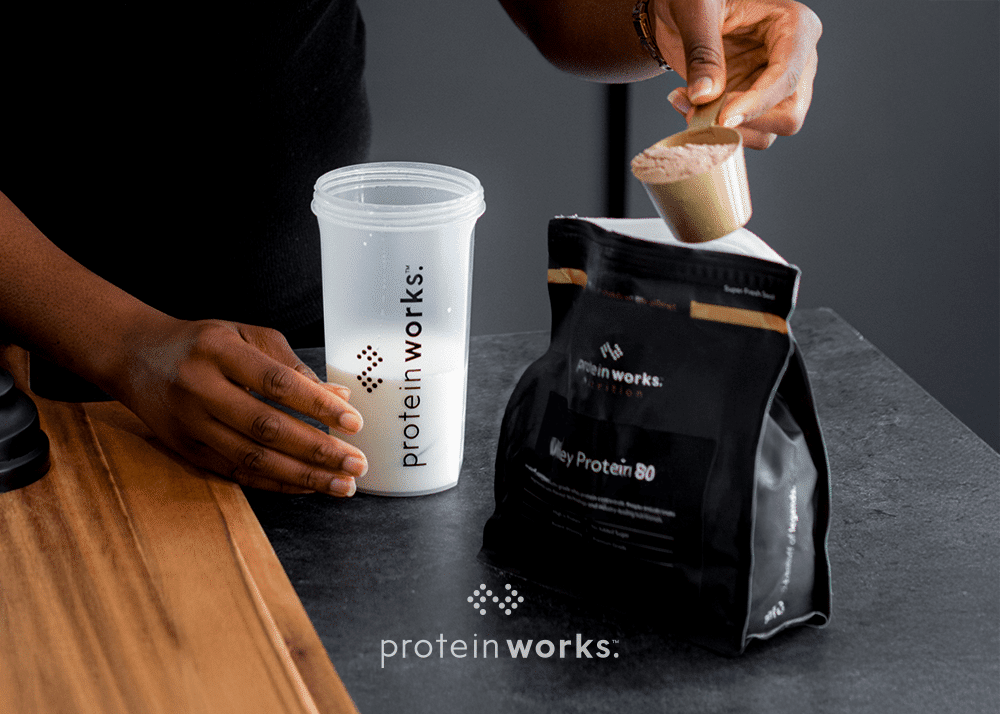
Top Tips to Help you Overcome Gym Anxiety
You stride through the doors feeling pumped to work out, but as you head onto the gym floor you see it’s bursting with regulars. The slamming of plates starts to ring in your ears. You begin to sweat. You get that sinking feeling. A feeling many of us know all too well.
Gym anxiety, although most common in newbies, does not discriminate! If you’re anxious about using the equipment, or even being observed or judged, you’re not alone.
The gym can be intimidating to venture into and some of us tend not to stray far from what we already know.
Check out our top tips to help you overcome gym anxiety below…
What is Gym Anxiety?
Gym anxiety, also known as ‘gymtimidation’, refers to the feeling of unease, nervousness, or apprehension that some people experience when they think about or engage in activities at a gym or fitness centre.
This anxiety can be triggered by various factors, including fear of judgment from others, concerns about body image, uncertainty about how to use equipment, or discomfort in communal spaces like changing rooms.
It’s a common experience for many people, especially those who are new to exercise environments or have specific insecurities or sensitivities related to physical fitness.
Overcoming gym anxiety often involves building confidence, finding supportive environments, and gradually acclimating to the gym setting.
What Triggers Gym Anxiety?
- Not knowing how to use equipment.
- Feeling as though you don’t belong.
- Worrying about how you look.
- Feeling intimidated by people in great shape.
- Thinking that people are judging you.
If you’ve ever felt like this, know that you’re not alone. Here are our top tips to overcome the anxiety:
How to Get Over Gym Anxiety
1. Don’t wing it
Pre-planning your workout helps you to avoid aimless walking around which can contribute to feeling out of place. If you know what equipment you need, you can head straight in with a purpose and crack on!
Keeping track of your workouts can also help you ensure that you are progressively overloading your muscles week by week. Progressive overload is the principle of placing increasingly greater demands on the body to strengthen specific muscles and bone mass (1). You can achieve this by upping the weight or completing more reps in your next workout, if you are working towards a goal.
2. Bring a buddy
Social support has a strong influence on physical activity adherence (2). Taking along a friend who has similar goals to yours can help you feel more comfortable, and you can laugh off any embarrassing moments together.
3. Shop around
Find an environment where you feel relaxed and comfortable, so you’ll be more likely to feel motivated to go. It has been found that the way a gym is laid out can facilitate a more positive experience for different gym-goers and influences how they use the space (3).
4. Educate yourself
Make sure to opt for a gym induction when you sign up. This helps to increase confidence as well as a sense of social belonging (4). You could also take a look at the wealth of free online tutorials before you go, so you know exactly how to execute your workout.
Don’t be afraid to ask for help if you’re unsure about anything, PTs know what they’re talking about and will always be happy to help. It is best to ask if you’re hesitant, rather than ending up with an injury!
5. Put on your best tunes
Music can influence mood and motivation, with studies suggesting that the music we choose can directly impact our neurobiology (5). It has also been found that mobile phones can assist in filtering out intimidating stimuli in your environment, so plug in your earphones and get your favourite playlist on (6).
6. Don’t compare yourself to others
Social comparison is natural, as people take notice of where they stand relative to others in their surroundings (7).
Use mindfulness techniques to help be present in the exercise that you are doing, by focusing on cues and engaging the muscles you are training. This will redirect your thoughts away from everyone else and allow you to focus your attention on your form (8). Overall, this technique will minimise social comparison and help reduce any negative self-talk.
7. Build confidence
Studies show that exercise is very effective in lessening anxiety overall (9). Consider going at off-peak times to avoid crowds and allow yourself space to use the equipment you need.
Setting manageable goals will help to build confidence, this could be anything from completing 15 minutes of cardio to attending a group class. Gradual exposure can help lessen anxiety in new situations (10), if you keep going, those feelings of insecurity will fade away.
Head on over to the free-weights area and give these suggested exercises a try!
A) Goblet squat
Perfect for learning proper squat form and for anyone looking to build on strength, this lower body exercise also engages your core and upper back muscles for a full body burn.
Holding a kettlebell or dumbbell in front of your chest, squat down pushing the hips back until the elbows touch the knees and then rise to standing again. This exercise is not only easy on the back, but it can also be simplified for beginners. Place a box behind you as a cue for pushing the hips back, aiming to tap the box at the bottom of the squat.
B) Single arm row
This exercise helps build a strong back, important for carrying out everyday activities. Using dumbbells helps to focus on one side of your body at a time which prevents muscle imbalance, along with allowing a full range of motion
Carry out this exercise by placing one hand and one knee on the bench to support yourself. Bring the dumbbell up to your chest, keeping it close to the body and keeping the chest still. Focus on lifting with your back and shoulders by squeezing the muscles before slowly lowering the dumbbell back to a straight arm position.
C) Dumbbell chest press
This bench press variation helps to isolates areas of weakness and can increase overall strength. The movement focuses primarily on the chest, but also engages the deltoids and triceps.
Lie flat on a bench, with your feet on the floor, and a dumbbell in each hand. Hold the dumbbells at a right angle to your body, with your palms facing towards your feet. Extend your arms up over the shoulders, squeezing the shoulder blades, and then lower them back down to a 90◦ angle.
D) Dumbbell overhead press
Targeting shoulders and using the back and core for stabilisation, this can be carried out on a bench in an upright seated position.
Sit holding a dumbbell in each hand at shoulder height, with your palms facing away from you. Bracing your core, keeping your chest up, extend through the elbows to press the weights up above your head. Then slowly lower them to the starting position.
If you have stepped away from fitness for an extended period, we would recommend having very little expectation for those first few sessions. Don’t worry about what you used to be able to do and embrace where you are now. Starting with expectations which are too high can make us feel defeated and cause us to give up (11). Set goals and take manageable steps towards these!
Don’t miss out on our range of Protein Shakes to include in your daily routine. Or, you can find out more information in our Training Archives.
References
- Baechle, T.R. and Earle, R.W. eds., 2008. Essentials of strength training and conditioning. Human kinetics.
- Dominick, K.L. and Morey, M., 2006. Adherence to physical activity. Patient treatment adherence: Concepts, interventions, and measurement, pp.49-94.
- Fisher, M.J.R., Berbary, L.A. and Misener, K.E., 2018. Narratives of negotiation and transformation: Women’s experiences within a mixed-gendered gym. Leisure Sciences, 40(6), pp.477-493.
- Koutsoubakis, D. 2020. Testing the effectiveness of a gym orientation program. Journal of Human Sciences, 17(2), 469-484.
- Bergland, C., 2012. The neuroscience of music, mindset, and motivation. The Athlete’s
- Coulter, K.S., 2020. Intimidation and distraction in an exercise context. International Journal of Sport and Exercise Psychology, pp.1-19.
- Suls, J., Martin, R. and Wheeler, L., 2002. Social comparison: Why, with whom, and with what effect? Current directions in psychological science, 11(5), pp.159-163.
- Cash, M. and Whittingham, K., 2010. What facets of mindfulness contribute to psychological well-being and depressive, anxious, and stress-related symptomatology? Mindfulness, 1(3), pp.177-182.
- Anderson, E.H. and Shivakumar, G., 2013. Effects of exercise and physical activity on anxiety. Frontiers in psychiatry, 4, p.27.
- Abramowitz, J.S., Deacon, B.J. and Whiteside, S.P., 2019. Exposure therapy for anxiety: Principles and practice. Guilford Publications.
- Baumeister, R.F., 1991. The self against itself: Escape or defeat. The relational self: Theoretical convergences in psychoanalysis and social psychology, pp.238-256.








No Comments yet!